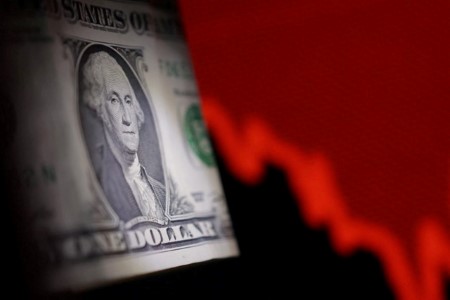




Quarterly Economic Growth Release: More BSP cuts to come
 DOWNLOAD
DOWNLOAD

Monthly Economic Update: Fed catches up
 DOWNLOAD
DOWNLOAD

Inflation Update: Steady and mellow
 DOWNLOAD
DOWNLOAD


US foreign investment slump – anomaly or warning?: McGeever

ORLANDO, Florida – Much of the ‘de-dollarization’ debate has focused on foreign exposure to US securities like stocks and bonds. But investors shouldn’t ignore foreign direct investment flows, the traditionally sticky capital that may also be sending out warning signals.
Foreign direct investment (FDI) typically involves an overseas entity acquiring the assets of a company in another country or increasing its holdings, often via the purchase of machinery, plants, or a controlling stake. FDI is therefore considered a longer-term investment compared to portfolio flows, which can be more volatile.
US President Donald Trump says he has attracted record foreign investment into the country. Indeed, the White House has a page on its website with a “non-comprehensive running list of new US-based investments” since Trump’s second term began. The running total is in the trillions of dollars and includes pledges from several foreign countries.
Included are more than USD 4 trillion in US-bound investments pledged by the United Arab Emirates, Qatar, Japan, and Saudi Arabia. During Trump’s trip to the Middle East last month, he said the US is on track to receive USD 12-USD 13 trillion of investments from countries around the globe, which includes “projects mostly announced … and some to be announced very shortly.”
These flows may emerge in full, in time. But official figures on Tuesday showed that FDI in the first quarter actually fell to USD 52.8 billion, the lowest total since the fourth quarter of 2022. That’s well below the quarterly averages of the past 10 and 20 years.
The Commerce Department figures also showed that the US current account deficit widened to a record USD 450.2 billion in the quarter, or 6% of US GDP, meaning FDI inflows barely covered 10% of that shortfall.
Should the Trump administration be worried?
TARIFF DISTORTIONS
The short answer is probably not, at least not yet.
FDI flows are typically far smaller than portfolio flows into equity and fixed income securities, so from the perspective of funding the current account deficit, the drop in FDI is not as pressing a concern.
On the other hand, if foreign investors are also buying fewer US securities, capital from elsewhere will be needed to fund that deficit.
Additionally, America’s balance of payments data in the first quarter was hugely distorted by domestic consumers and businesses front-running Trump’s tariffs, loading up on imports before the duties kick in later this year.
Trump’s bet is that the deficit will shrink this year and beyond as his ‘America First’ policies spur more “onshoring” from domestic firms as they bring production back home and the weakening dollar helps US manufacturing by making exports more competitive. The subsequent boom will attract investment from companies and governments overseas. In theory.
However, these dynamics work both ways.
For example, the European Union is by far the largest provider of US FDI, accounting for 45% of the total in 2023, according to Citi. The combination of the continent’s German-led fiscal splurge, US tariffs, and ‘de-dollarization’ concerns could easily crimp that flow, perhaps significantly.
Another potential risk to US-bound FDI is ‘Section 899′ – the possible tax of up to 20% on foreigners’ US income that could be part of Trump’s budget plans. A Tax Foundation report in May found that Section 899 would “hit inbound investment from countries that make up more than 80 percent of the US inbound FDI stock.”
Industry pushback may water down Section 899, but it remains a cloud on the US investment horizon.
The US is the world’s biggest recipient of FDI, with a 25% share of global volumes in 2023, up from around 15% before the pandemic, according to Citi. Its economy is the largest in the world, a thriving hub of innovation, pioneering technology, artificial intelligence and money-making potential.
That will always attract FDI. Whether it attracts as much in this new environment remains to be seen.
(By Jamie McGeever; Editing by Andrew Heavens)
This article originally appeared on reuters.com





 By Reuters
By Reuters